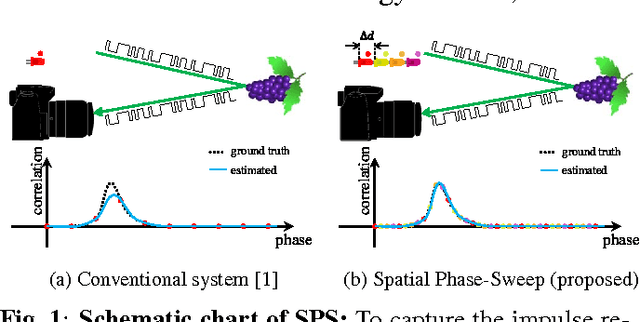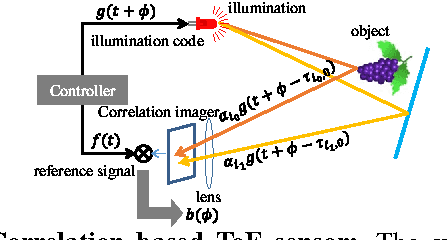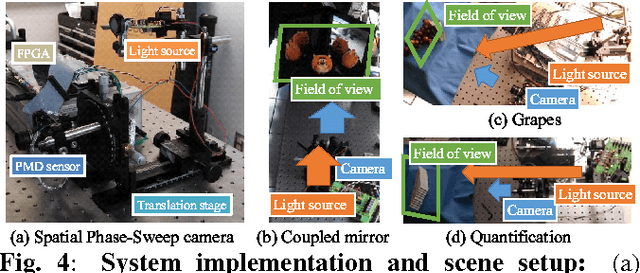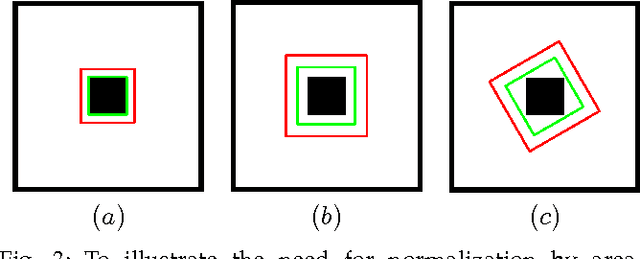Adithya Kumar Pediredla
Spatial Phase-Sweep: Increasing temporal resolution of transient imaging using a light source array
Dec 21, 2015



Abstract:Transient imaging or light-in-flight techniques capture the propagation of an ultra-short pulse of light through a scene, which in effect captures the optical impulse response of the scene. Recently, it has been shown that we can capture transient images using commercially available Time-of-Flight (ToF) systems such as Photonic Mixer Devices (PMD). In this paper, we propose `spatial phase-sweep', a technique that exploits the speed of light to increase the temporal resolution beyond the 100 picosecond limit imposed by current electronics. Spatial phase-sweep uses a linear array of light sources with spatial separation of about 3 mm between them, thereby resulting in a time shift of about 10 picoseconds, which translates into 100 Gfps of transient imaging in theory. We demonstrate a prototype and transient imaging results using spatial phase-sweep.
Template-Based Active Contours
Dec 03, 2013



Abstract:We develop a generalized active contour formalism for image segmentation based on shape templates. The shape template is subjected to a restricted affine transformation (RAT) in order to segment the object of interest. RAT allows for translation, rotation, and scaling, which give a total of five degrees of freedom. The proposed active contour comprises an inner and outer contour pair, which are closed and concentric. The active contour energy is a contrast function defined based on the intensities of pixels that lie inside the inner contour and those that lie in the annulus between the inner and outer contours. We show that the contrast energy functional is optimal under certain conditions. The optimal RAT parameters are computed by maximizing the contrast function using a gradient descent optimizer. We show that the calculations are made efficient through use of Green's theorem. The proposed formalism is capable of handling a variety of shapes because for a chosen template, optimization is carried with respect to the RAT parameters only. The proposed formalism is validated on multiple images to show robustness to Gaussian and Poisson noise, to initialization, and to partial loss of structure in the object to be segmented.
 Add to Chrome
Add to Chrome Add to Firefox
Add to Firefox Add to Edge
Add to Edge